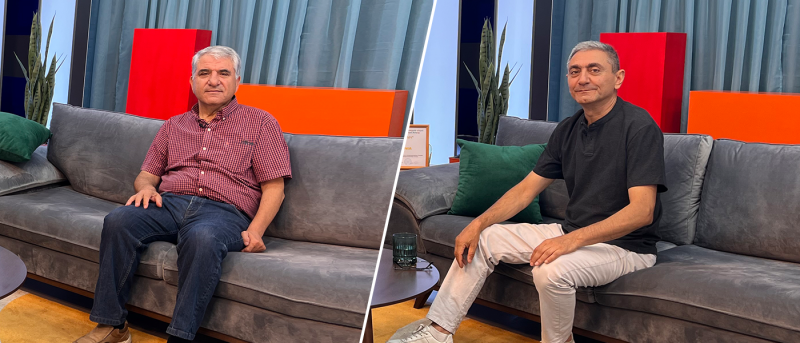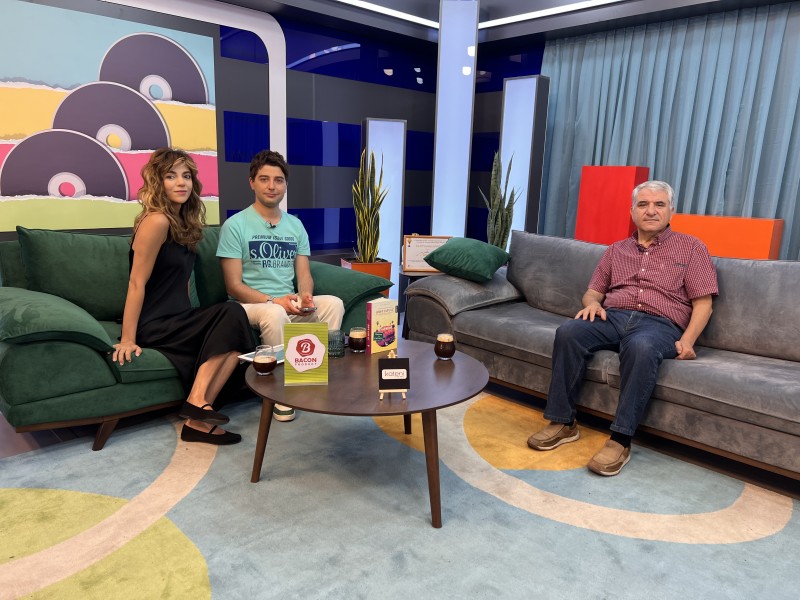TV presentation of "Does anybody come from LA?” (video, photos)

The presentation of "Does anybody come from LA?” book took place within the framework of the Morning Show aired on Armenia TV. Sociologists Mihran and Nare Galstyan studied a complex problem of the last decades and tried to answer an important question: w
"Does anybody come from LA?" focuses on the repatriation problems of the Armenian community of Los Angeles, the authors are Mihran Galstyan, Ph.D. in History, and Nare Galstyan, a sociologist. The study answers one question: "Does anybody come from LA?" The authors talked with the largest Armenian community, the Armenians of Los Angeles, they also conducted sociological surveys among immigrants to Armenia and tried to understand whether those who seek the American dream are ready to return to Armenia again.
According to the co-author of the book, Mihran Galstyan, the expectations that 5 million people will gather in Armenia are not so realistic. As he mentioned, different parts of the diaspora have different levels of attachment to Armenia. Besides, the homeland and the national state are still not identical in the diaspora.
"We need the economic, social, demographic and cultural problems of the country to be solved. To create attractive conditions that will enable people to move back to Armenia. A person cannot leave his planned future and lifestyle and go after another way of life, after all, he/she went to realize his/her dreams. In response to our question, "Under what conditions would you move and settle in Armenia?", after reading the materials, I understood that not even 1/3 of the interviewees had even thought about moving back. That question was not relevant to them, and they started thinking about it during the interview itself. From that moment, an internal conflict arises for them: to stay or to go".
Gnel Nalbandian, editor-in-chief of the Newmag publishing house, believes that there is a lot of talk about diaspora, but there is no particular idea of what diaspora is, or what repatriation is. "This is a very important work in terms of defining terms. Probably, specialists in the field should note that we can use the political term "diaspora" to refer to the descendants of the survivors of the Armenian Genocide of 1915, but the state, scientists, and diaspora researchers should define in some way which characteristic corresponds to the diaspora. It facilitates our relationships, our perceptions, and creates stereotypes for scientific analysis, so this is a very important work".


According to the editor-in-chief of Newmag, the book is not fiction, it is a popular scientific work that is relevant and interesting to everyone. "We have taken care to ensure that the book is not limited to academic circles only. Our intention is for people to pick it up, read it, and find it engaging and relevant to them as well. By reading this, they will find the ideas of people like them, partial quotes, and data from public opinion polls. The readers can see what people like them think about, and what they consider problematic for their return. One can say, “Let them return”, but these are human destinies, how can they leave their business and come? These are questions we should be able to address for ourselves before making any accusations".
The scientific council of the Institute of Archeology and Ethnography of the National Academy of Sciences of the Republic of Armenia guaranteed the publication of the book. It was published within the Minasyan series.
Read also

A Closed Community of Independent Thinkers: Newmag Launches Signature Club (Video)

Newmag Publishing Presents Two New Books on Armenia TV’s “Good Morning” Program (Video)

Paul Ignatius, the highest-ranking Armenian-American public official in US history, passes away at 104

Bonjour, Littérature! The third Francofest International Book Festival was held (photos)

